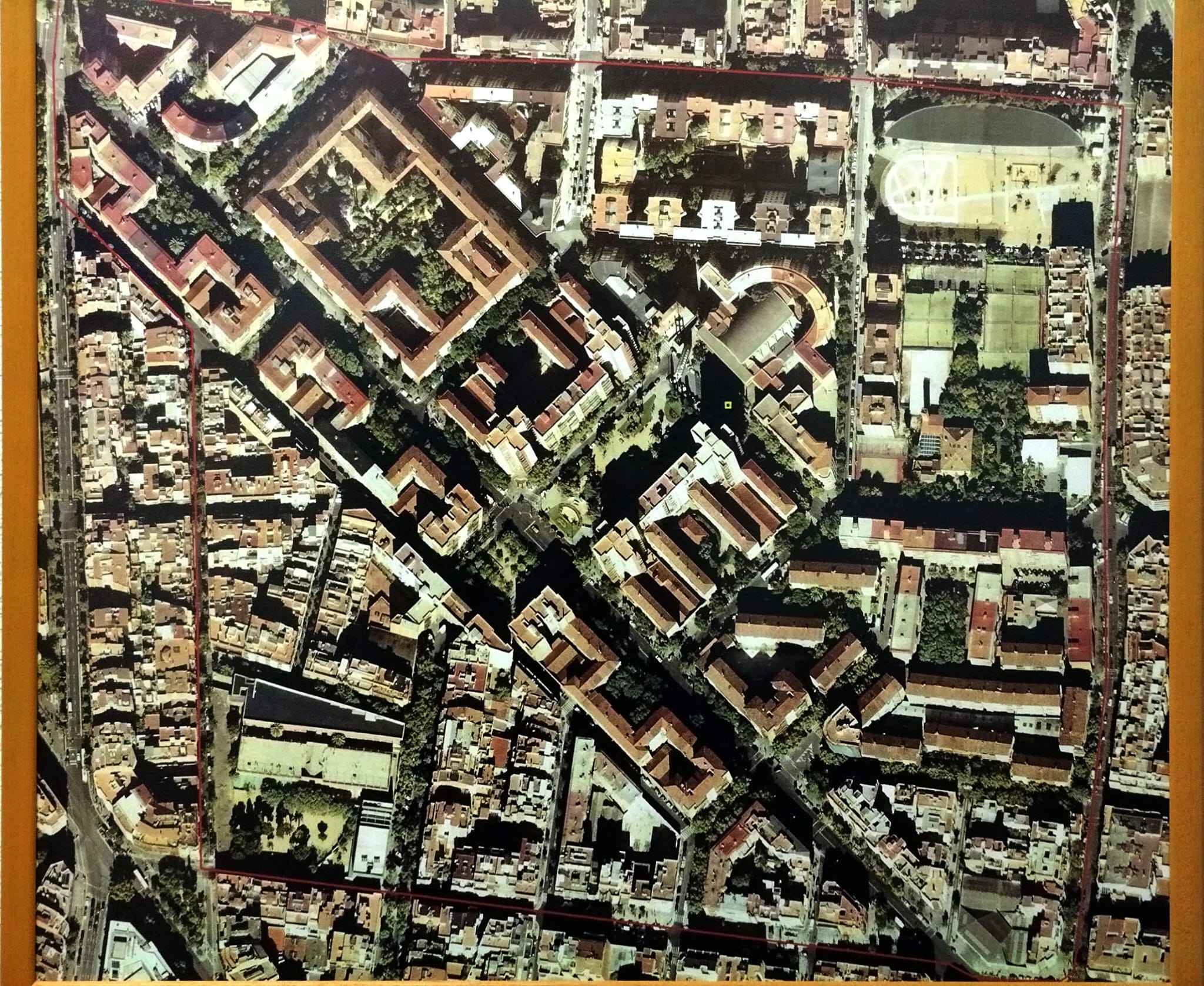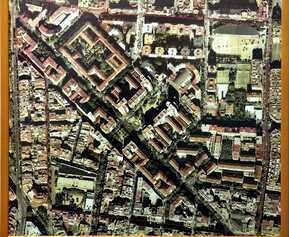Aerial image of the Congrés neighborhood
🎙️ Collective documentation
The participants of the collective documentation visited on May 31, 2024 the parish of Sant Pius X and had access to its photographic archive.
Evolution of the public spaces of the Congrés i els Indians neighborhood
Seeing the aerial image of the neighborhood that they have in the parish, the participants recalled that, after the construction of the houses of the Congress (The first delivery of houses was made in 1954 and the last block of houses, in the years 1967-1968), the public spaces were used to practice various sports: “...The current Masana Gardens were a soccer field, other squares were basketball courts,...”. The ground was full of sand and “the kids used to fall and break their knees...”.
Another reflection that raised up is the link between the construction of the houses and the political situation that was being experienced in Spain: “when the neighborhood was built in the middle of the dictatorship, the idea was not to create community spaces for diverse neighbors to get together (for example, like now when many birthday parties are held in public gardens), but rather the public spaces were mainly occupied by men doing sports activities. The neighborhood was designed to be hygienic, not to be communal...”. They also shared that despite its initial design, the neighborhood structure was very flexible and became more communitarian when neighbors started to frequent more green spaces that were previously just sand and dust.
Analyzing the map of the neighborhood, the participants also highlighted the width of the streets and sidewalks, which was and is a great benefit for the residents, and noted that “It is not that the Congrés is full of old people, but that in this neighborhood the old people can go out more, not like in other neighborhoods”.
Emblematic buildings and interconnectivity
They also recalled that in this neighborhood, the laboratory of the Catalan researcher Dr. Ferrán y Clúa is still preserved. “His laboratory was located on the corner, between Acacias and Garcilaso streets. There he designed vaccines for tuberculosis and cholera.”
Another aspect they highlighted was the construction of the metro station, which was completed in the late 1950s and facilitated interconnectivity with other areas of Barcelona. It was the clergy themselves who inaugurated it. They first called the metro station “Viviendas del Congreso” and then “Congrés”.
👥Authors of the documentation
Members of the group Fem Memòries del Canòdrom.
️⚙️Methodology
Photograph documented collectively by participating neighbors in the groupFem Memòries del Canòdrom (Link externo) (External link).
📸 Assignor
Sant Pius X parish.



.png)



Share